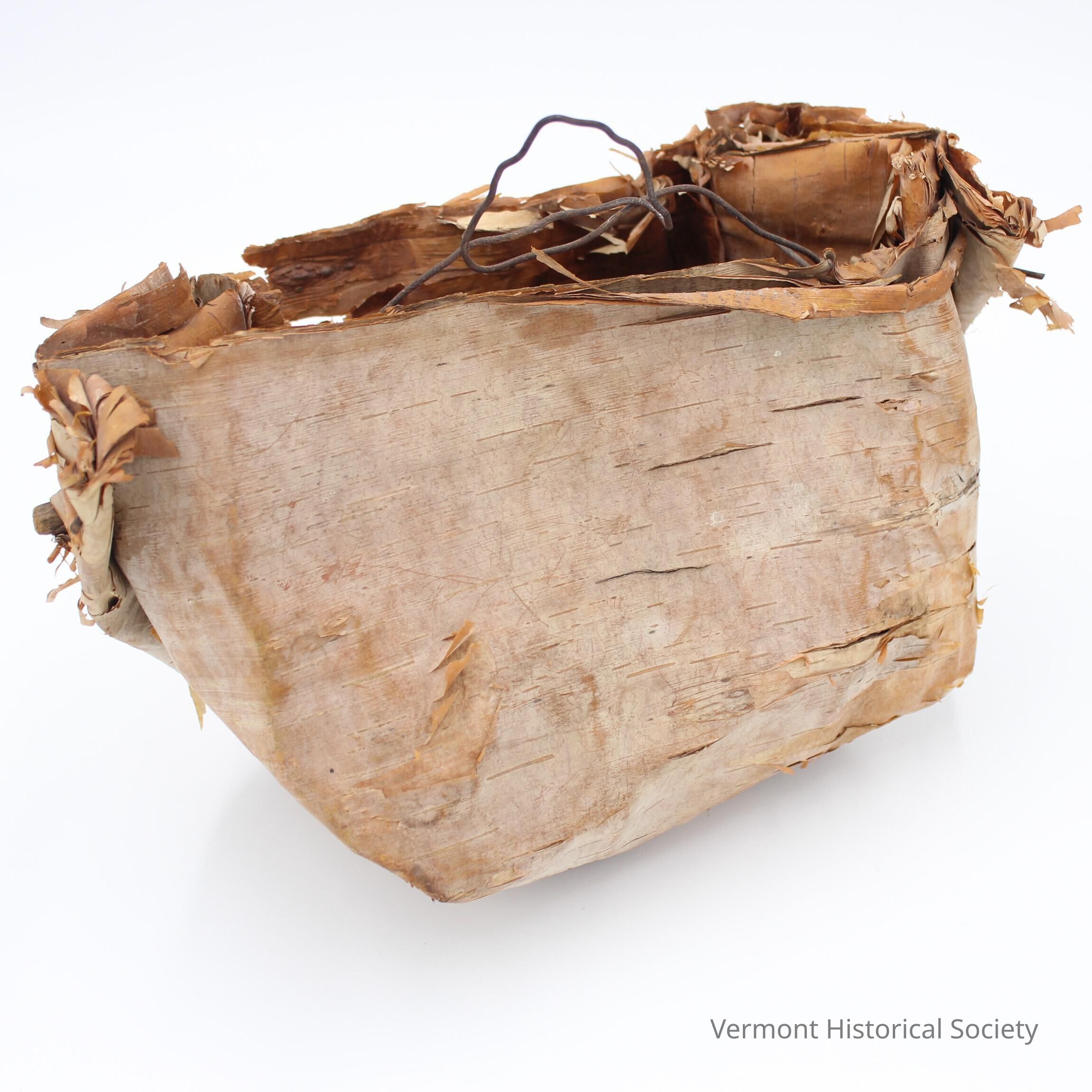Sap Bucket
Name/Title
Sap BucketEntry/Object ID
2017.3.7Description
Folded birch bark sap bucket, also called a “quick basket.” The bucket is made of several layers of birch bark, folded together to form a holding vessel. The white part of the birch bark faces the exterior of the basket. A piece of wood crosses the top of the bucket and pierces the birch bark at the top of the folds. Metal wire is attached to the piece of wood. The wire would have been hung on a wooden sap spile for collecting maple sap.Context
According to the donor, this 19th century birch bark sap bucket, or “quick basket,” was used to collect maple sap for sugaring in northern Vermont.Acquisition
Accession
2017.3Source or Donor
Wiseman, Frederick M.Acquisition Method
GiftCredit Line
Gift of Frederick M. WisemanMade/Created
Date made
1800 - 1900Time Period
19th CenturyEthnography
Culture/Tribe
Abenaki
Native American

